Reinvention started
Anyway, the reinvention of managed foodservice did start. About all big caterers are busy developing their own delivery concepts. Their thoughts go out to dark kitchen-like solutions (although specialized dark kitchen companies are also potential new competitors). Furthermore, their eye falls on partly unmanned compact systems for the provision of food and drinks. In addition, we see plenty of strategic collaborations. The collaboration between Just Eat Takeaway and Sodexo is a good example. With the Sodexo payment card, made available by employers, employees can now pay for their lunch order via the platform. You could say it's a defensive decision for Sodexo, whereas the deal fits on the other hand very well with Just Eat Takeaway’s objectives. The Dutch company makes no secret of wanting to play a bigger role in the business market. For several years it bought the Israëli company 10bis, which is specialized in delivering meals on the workplace. Besides that, food prepared in the rapidly increasing number of dark kitchens, can also boost revenues via platforms, although some of the platforms are still ambivalent about dark kitchens.
With all this, this branch of sport can still learn a lot from the return systems of the traditional mums and the dabbawalas in India. That is, there’s a growing pressure on the food delivery business to reduce the amount of packaging waste. As their involvement as an intermediary in the business market increases, this topic will also come higher on the agenda. Companies need to remain conscious about food packaging pollution. The trends seem to point to food spending shifting from the company buffets to delivery.
mums
Let’s take a brief look back in time. After mass production became more widespread, in most countries it were labor unions who enforced better working and pausing conditions for workers. Companies created canteens that often formed the basis for the emergence of specialized food providers.
But in the traditional days before the likes such as Aramark, Compass and Sodexo took the lead, it was family members, in many cases mum, who was the main provider of lunches. For example, whether dad was working in the fields, in his garage or a workshop, she brought him fresh coffee and sandwiches. In a way, in a country like India this is still the case. That is, mum’s lunches are delivered by dabbawalas. It’s a lunch delivery system that dates from the end of the nineteenth century. Thousands of dabbawalas (named after the metal lunchboxes dabbas) bring homemade lunches to dads who are working at an office, in the field or the factories. In Mumbai alone 200,000 meals a day are delivered in this way and the empty dabbas are even returned to the proverbial mums at home. Will Just Eat Takeaway, Doordash and Delivery Hero develop into the mums and dabbawalas of our time? Are we returning to taste on demand instead of a limited choice at the buffet?
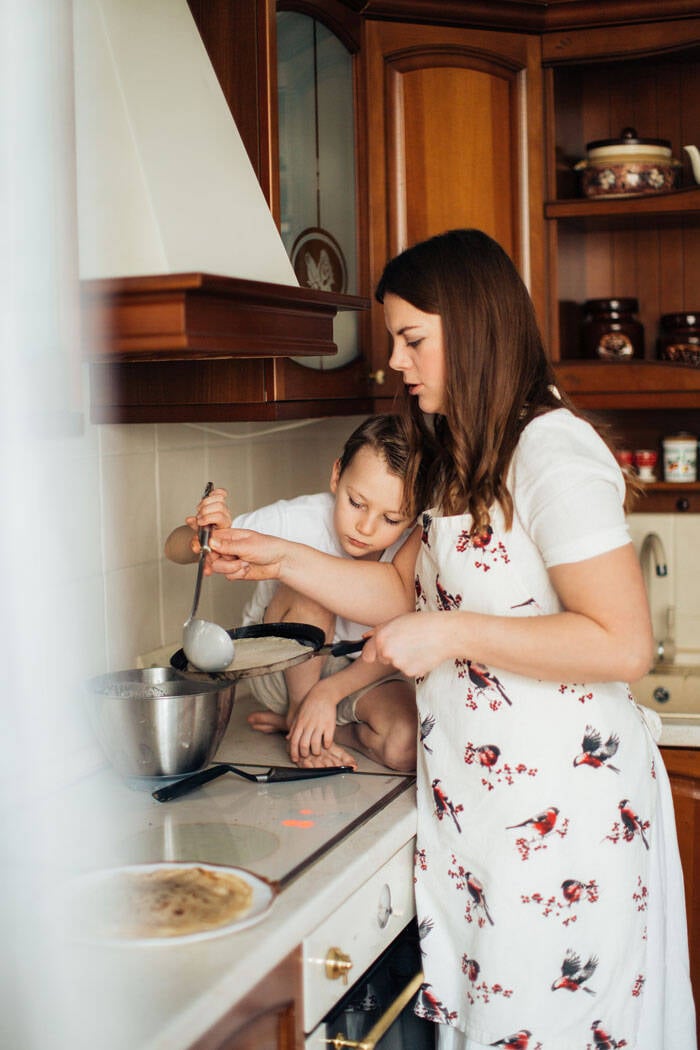
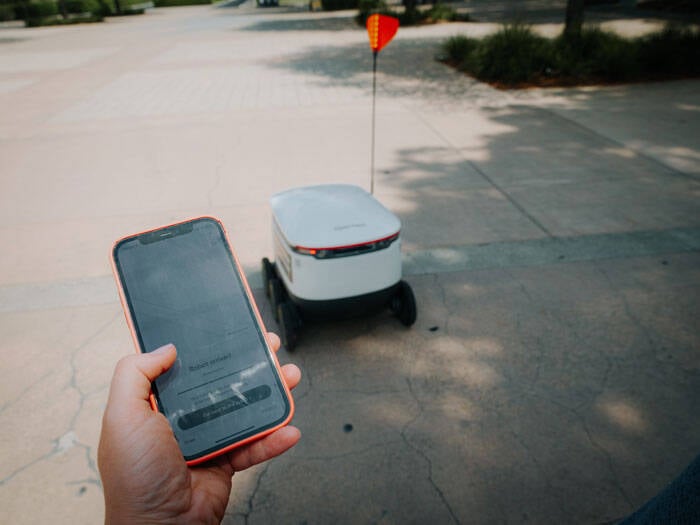
For the in-company catering managers this means fewer users, less turnover, but above all an attack on the already meager profit. To top it all off, the pandemic has the lasting effect that office employees will work from home much more. There’s no escaping it, the industry of managed foodservice needs to reinvent itself.
education
Other big markets for companies like Aramark, Sodexo and Compass tend to become flexible as well. Let’s take the education market, the campuses of universities and colleges. Although many students will return to their school desks, things have changed. Apps to order and pay became even more accessible during the pandemic. Awareness has grown that you can have your favourite lunch and meals delivered anywhere all the time. Maybe even dropped by a drone during lunch break in the open air or brought by small robotic carts, which is already the reality at a number of universities.
Apart from students, office workers around the world adapted food delivery at their work spot already, on a large scale. Delivery started with overtime pizzas, but a fast growing group of employees is ordering coffee or lunch from outside the building. It is now as common as scoring breakfast on the way to work.
Factory food
The most steady business for outsourced food management seems to be lying at production companies. Although suffering from lack of raw materials, outbreaks of the dreaded virus in, for instance, the meat industry, and in some cases a drop in demand, most factories could continue their operations during the pandemic crisis. Certainly, catering changed, while free flow buffets were out of use, but at least factory catering looked like business as usual.
Yes, production companies seem steady business for professional contract caterers. But looks can be deceiving. As a result of new production techniques, such as the automated and app driven on demand printing of products, even the proverbial blue collar catering could get challenged.
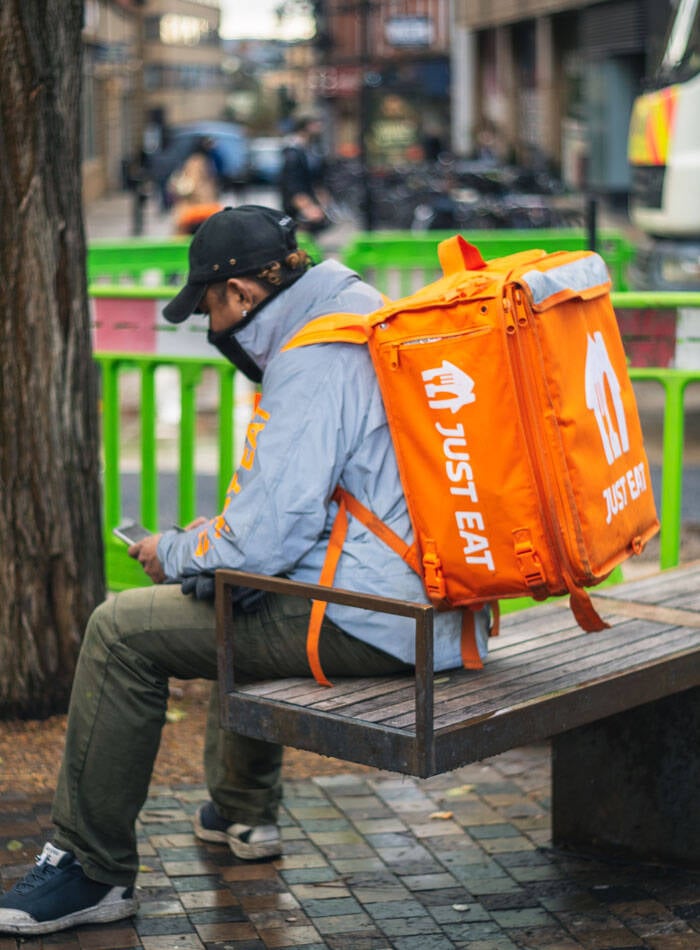
If you want an insight of the catering’s business future at work spots around the world, just find yourself some video’s what lunch hour looks like in a lot of Chinese cities nowadays. Companies like Eleme and Meituan produce thousands of lunches in large data driven dark kitchens. An army of meal couriers spreads across the busy streets as if they are taking part in a procession of ants. Once arrived at their app guided destination, office workers are waiting in line for their lunches. The couriers hold up their plastic bags, shouting names and numbers. Handing over the right order to the right customer looks a lot like praising and bidding on a livestock market. Is this form of lunch catering during work the lunch catering of the future?
No doubt. Our meal times will become just as lean as our way of working. The business for professional contract caterers and foodservice management companies is more challenging than ever before. Food delivery will play a prominent role in providing lunches for employees, wherever their workplace is located.
Ubel Zuiderveld Xiao Er Kong
Food becomes as flexible as the workplace
A thought about the future of food at work

expert opinion
5 min
food becomes as flexible as the workplace
Reinvention started
Anyway, the reinvention of managed foodservice did start. About all big caterers are busy developing their own delivery concepts. Their thoughts go out to dark kitchen-like solutions (although specialized dark kitchen companies are also potential new competitors). Furthermore, their eye falls on partly unmanned compact systems for the provision of food and drinks. In addition, we see plenty of strategic collaborations. The collaboration between Just Eat Takeaway and Sodexo is a good example. With the Sodexo payment card, made available by employers, employees can now pay for their lunch order via the platform. You could say it's a defensive decision for Sodexo, whereas the deal fits on the other hand very well with Just Eat Takeaway’s objectives. The Dutch company makes no secret of wanting to play a bigger role in the business market. For several years it bought the Israëli company 10bis, which is specialized in delivering meals on the workplace. Besides that, food prepared in the rapidly increasing number of dark kitchens, can also boost revenues via platforms, although some of the platforms are still ambivalent about dark kitchens.
With all this, this branch of sport can still learn a lot from the return systems of the traditional mums and the dabbawalas in India. That is, there’s a growing pressure on the food delivery business to reduce the amount of packaging waste. As their involvement as an intermediary in the business market increases, this topic will also come higher on the agenda. Companies need to remain conscious about food packaging pollution. The trends seem to point to food spending shifting from the company buffets to delivery.
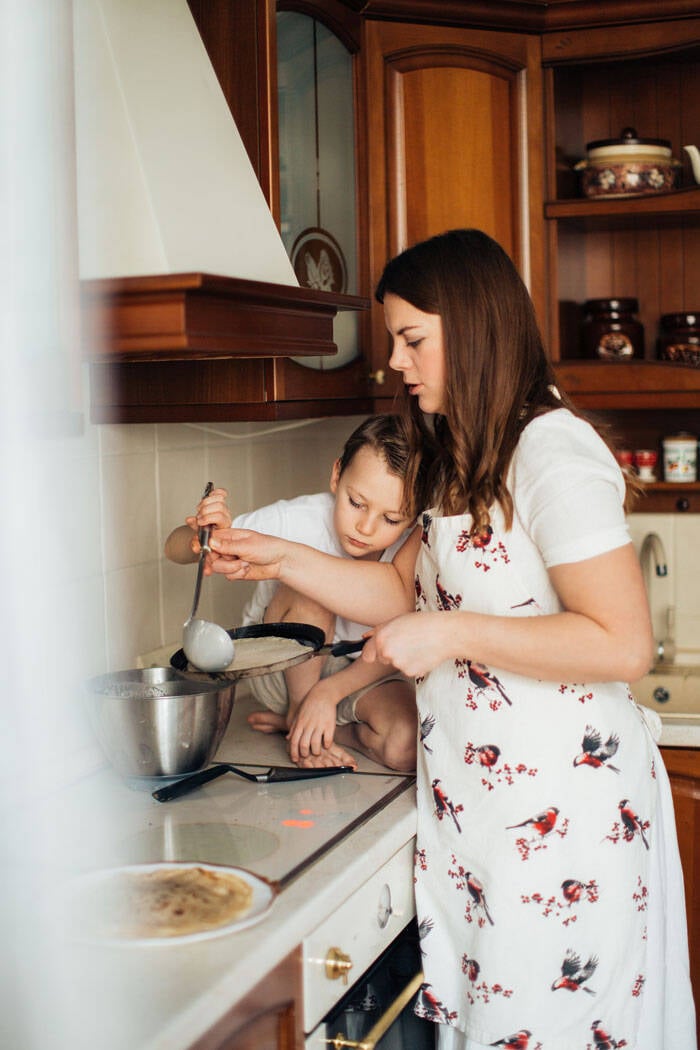
mums
Let’s take a brief look back in time. After mass production became more widespread, in most countries it were labor unions who enforced better working and pausing conditions for workers. Companies created canteens that often formed the basis for the emergence of specialized food providers.
But in the traditional days before the likes such as Aramark, Compass and Sodexo took the lead, it was family members, in many cases mum, who was the main provider of lunches. For example, whether dad was working in the fields, in his garage or a workshop, she brought him fresh coffee and sandwiches. In a way, in a country like India this is still the case. That is, mum’s lunches are delivered by dabbawalas. It’s a lunch delivery system that dates from the end of the nineteenth century. Thousands of dabbawalas (named after the metal lunchboxes dabbas) bring homemade lunches to dads who are working at an office, in the field or the factories. In Mumbai alone 200,000 meals a day are delivered in this way and the empty dabbas are even returned to the proverbial mums at home. Will Just Eat Takeaway, Doordash and Delivery Hero develop into the mums and dabbawalas of our time? Are we returning to taste on demand instead of a limited choice at the buffet?
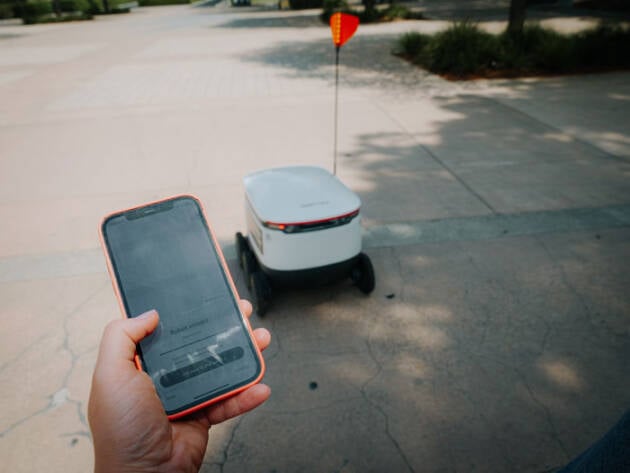
For the in-company catering managers this means fewer users, less turnover, but above all an attack on the already meager profit. To top it all off, the pandemic has the lasting effect that office employees will work from home much more. There’s no escaping it, the industry of managed foodservice needs to reinvent itself.
education
Other big markets for companies like Aramark, Sodexo and Compass tend to become flexible as well. Let’s take the education market, the campuses of universities and colleges. Although many students will return to their school desks, things have changed. Apps to order and pay became even more accessible during the pandemic. Awareness has grown that you can have your favourite lunch and meals delivered anywhere all the time. Maybe even dropped by a drone during lunch break in the open air or brought by small robotic carts, which is already the reality at a number of universities.
Apart from students, office workers around the world adapted food delivery at their work spot already, on a large scale. Delivery started with overtime pizzas, but a fast growing group of employees is ordering coffee or lunch from outside the building. It is now as common as scoring breakfast on the way to work.
Factory food
The most steady business for outsourced food management seems to be lying at production companies. Although suffering from lack of raw materials, outbreaks of the dreaded virus in, for instance, the meat industry, and in some cases a drop in demand, most factories could continue their operations during the pandemic crisis. Certainly, catering changed, while free flow buffets were out of use, but at least factory catering looked like business as usual.
Yes, production companies seem steady business for professional contract caterers. But looks can be deceiving. As a result of new production techniques, such as the automated and app driven on demand printing of products, even the proverbial blue collar catering could get challenged.
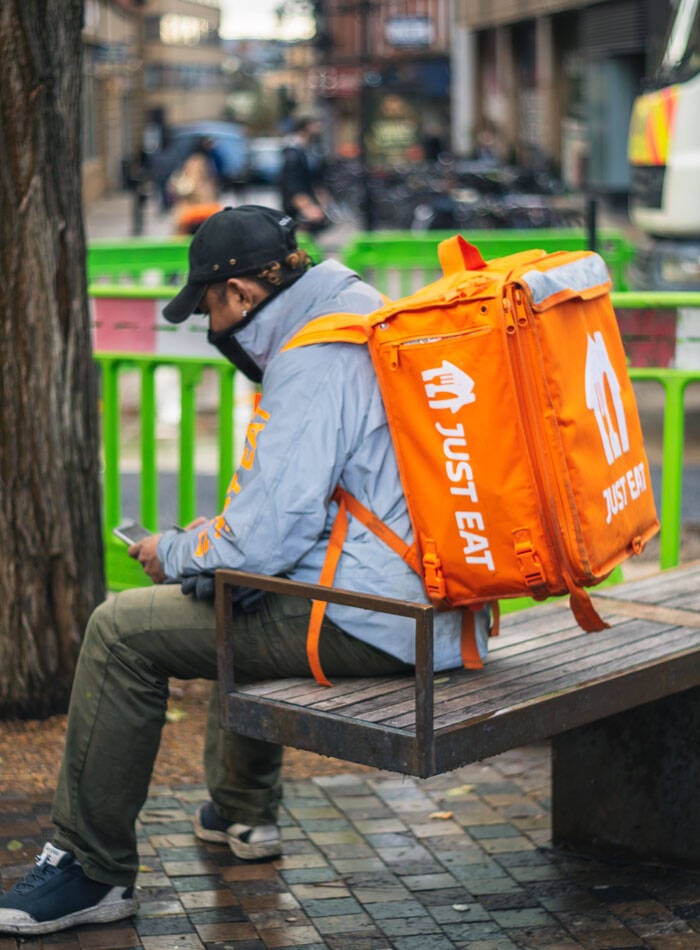
If you want an insight of the catering’s business future at work spots around the world, just find yourself some video’s what lunch hour looks like in a lot of Chinese cities nowadays. Companies like Eleme and Meituan produce thousands of lunches in large data driven dark kitchens. An army of meal couriers spreads across the busy streets as if they are taking part in a procession of ants. Once arrived at their app guided destination, office workers are waiting in line for their lunches. The couriers hold up their plastic bags, shouting names and numbers. Handing over the right order to the right customer looks a lot like praising and bidding on a livestock market. Is this form of lunch catering during work the lunch catering of the future?
No doubt. Our meal times will become just as lean as our way of working. The business for professional contract caterers and foodservice management companies is more challenging than ever before. Food delivery will play a prominent role in providing lunches for employees, wherever their workplace is located.
Ubel Zuiderveld Xiao Er Kong
A thought about the future of food at work
Food becomes as flexible as the workplace
5 min










